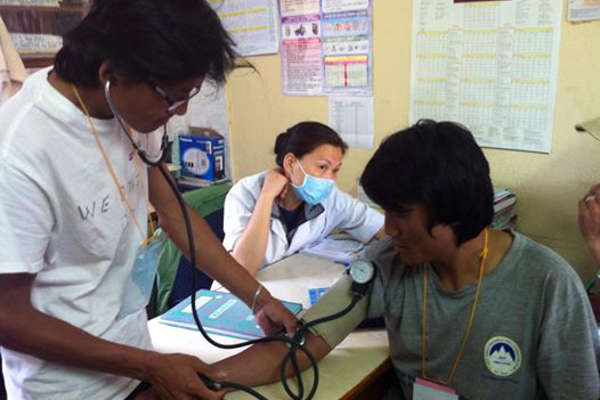In October 2014, 43 people died in a snowstorm at the Thorung La Pass, the highpoint of the Annapurna circuit, which was Nepal’s worst ever tourism accident. Most of the dead were Nepalese trekking workers, but some were trekkers from Canada, India, Israel, Japan, Poland, Slovakia and Vietnam.
The president of the Trekking Agents’ Association of Nepal, Ramesh Dhamala, remarked that “guides are not properly trained and many lack safety ideas on how to respond to such situations.” Efforts are afoot to rectify this problem.
The International Climbing and Mountaineering Federation, which is known by its French name of Union Internationale des Associations d’Alpinisme (UIAA), recently conducted a week-long programme for experienced Nepalese trainers that was led by Steve Long, chairman of the UIAA Training Standards Panel.
There were 10 trainers on this occasion, with 30 in the past. Some were veterans of Everest.
The aim of the programme is to enable trainers to deliver instruction in a qualification for trek leaders, an effort that has spanned several years.
Qualifications will begin to be issued in 2016. The Nepal Mountaineering Association and Nepal National Mountain Guides Association are also involved. Funding came from the Petzl Foundation, whose aims are accident preservation, conservation and scientific research with regards to mountains.
The Petzl company, of which it is an offshoot, manufactures around 600 items of climbing and caving equipment.
The qualification will cover leadership skills and basic mountaineering.
It will include high altitude skills such as avalanche, glacier, simple rock and snow climbing, Long explained that it will ensure that leaders can make reliable mountaineering judgements on such matters as acclimatisation, altitude sickness, avalanche potential and landslides.
This requires dynamic risk assessment and party management skills.

